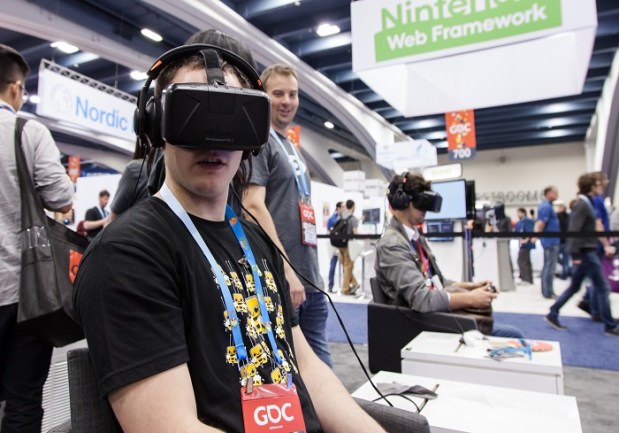Sony Gives Virtual Reality Competitors 6-Month Head Start

As Oculus has just weeks remaining in its countdown to the release of its highly anticipated Rift virtual reality headset, one of its biggest competitors just announced that Oculus will win the battle for headlines at the time of launch — at least, that is, until the fall.
During a presentation at the 2016 Game Developer Conference in San Francisco, Sony announced that it would be launching its PlayStation VR headset in October with a starting price point of $399, The Verge reported.
The product does appear to have an eager U.K following, with preorders for the PlayStation VR headset on Amazon UK maxing out in a matter of minutes, according to GameSpot. But U.K. supplies do appear to be limited, even with the six-month waiting period.
“Based on our initial allocation we cannot guarantee release day delivery if you ordered after 11:45 AM GMT, [on March 16],” Amazon UK said in a statement.
In comparison to the Oculus Rift ($599) and Valve’s HTC Vive ($799), PlayStation’s device would appear to be the frugal VR enthusiast’s choice, considering it works with Sony’s PS4 console.
However, if Sony is the horse that those virtual reality first adopters have hitched their wagons to, they’ll miss the first wave of the VR revolution.
Because all VR headsets won’t be judged on the merit of the stand-alone devices but in conjunction with the games and experiences they present, the head start that Sony appears to be giving Oculus, which launches its Rift headset later this month, might not be as dire a situation as it looks. As the only company currently in the race for VR with actual game development experience, not to mention deep ties to third-party dev studios across the industry, Sony will have about 50 games for its PlayStation VR by December 2016, Ars Technica explained.
Ranging from thief simulator mini games to community-centric hangouts, these experiences could serve to win many customers with too itchy trigger fingers to wait until October to own their own personal VR headsets. Of course, that relies heavily on the fact that consumers either won’t jump at the chance to buy a Rift or Vive — or somehow have a few thousand dollars lying around to have their virtual reality fingers in many digital pots.
